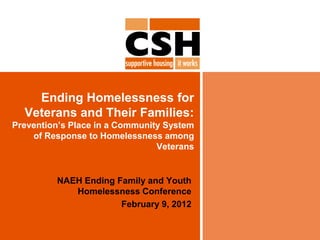The document discusses strategies to prevent and end homelessness among veterans and their families, emphasizing the need for a comprehensive response system. It outlines various patterns of homelessness and the appropriate interventions for each, including prevention, rapid re-housing, and supportive services. The Supportive Services for Veteran Families (SSVF) program is highlighted as a new approach that facilitates housing stability and connects veterans to necessary resources.





















